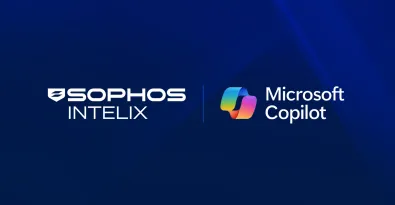What is extended detection and response (XDR)?
Extended detection and response (XDR) is a cybersecurity approach that identifies threats by unifying information from multiple security solutions, automating and accelerating detection, investigation, and response in ways that isolated point solutions cannot. XDR can be packaged and delivered as a tool or suite of tools that organizations deploy, administer, and operate.
Advantages of XDR
- Identifies threats across multiple attack surfaces, including endpoints, services, network, email, cloud infrastructure, and more.
- Works across more layers and collects more data than endpoint detection and response (EDR) tools, enabling you to defend against multi-stage threats – attacks that end in a different place to where they started.
- Unifies data from multiple security tools and technologies, including the XDR vendor’s own products and third-party solutions, to provide visibility across key control points.
- Provides optimized tools and workflows that enable you to investigate and hunt for threats across your environment using a single tool.
- Rapidly contains threats with accelerated and automated response capabilities.
- Boosts cyber insurance eligibility by reducing security risk.
How does XDR compare to other threat detection and response tools?
XDR vs. EDR
Endpoint Detection and Response (EDR) is a cybersecurity approach designed to monitor, detect, and respond to advanced threats and security incidents on endpoints, such as desktops, laptops, and servers. Endpoints are often the entry points for cyberattacks, making them a critical focus for security efforts. Comprehensive endpoint detection and response capabilities are included in Sophos XDR subscriptions.
XDR solutions analyze data across multiple attack surfaces, integrating data from endpoints, servers, cloud environments, networks, email, and other sources.
XDR vs. MDR
Managed detection and response (MDR) is a fully-managed, 24/7 service delivered by experts who specialize in detecting and responding to cyberattacks that technology solutions alone cannot prevent. By combining human expertise with protection technologies and advanced machine learning models, MDR analysts can detect, investigate, and neutralize advanced human-led attacks, preventing data breaches and ransomware.
With XDR, organizations leverage unified cybersecurity tools and workflows to manage their own detection and response activities.
XDR vs. SIEM
XDR shares functional similarities with SIEM (security information and event management) tools. Like XDR solutions, SIEM tools can collect and analyze enormous volumes of log events and other data across disparate sources. However, whereas SIEM is primarily a search tool – requiring users to ask multiple questions and assembling the resultant answers to arrive at a conclusion – XDR solutions are capable of automatically responding to threats or, in cases where automated response cannot be performed, accelerating analyst-led threat hunts and investigations to improve response times.
XDR vs SOAR
SOAR (security orchestration, automation, and response) platforms can add machine assistance to human security operators through the creation of playbooks (i.e., logic flows that can trigger scripted actions when certain conditions are met). However, they will not create those processes or workflows for you. So, while SOAR can help with alert management, it requires significant up-front investments in implementation as well as ongoing maintenance (tuning) performed by experienced security analysts to build effective case management and incident response playbooks.
How does XDR fit into a cybersecurity strategy?
XDR brings a proactive approach to cybersecurity, allowing administrators to take action quickly when faced with a threat. XDR acts at every stage of an attack, from infiltration to execution to recovery. Because of its wide-reaching capabilities, XDR is suited to all types of IT infrastructure, whether in-house or in the cloud.
If your company has been growing but you haven’t adjusted your cybersecurity solutions appropriately, it’s the perfect time to consider XDR. Additionally, if you have a well-staffed security team but they’re feeling overwhelmed juggling several tools and services, XDR might be the solution you need.
Many organizations continue to seek security vendor and product consolidation to manage risk and improve security operations productivity. XDR is an attractive approach to provide more accurate detection and prevention capabilities at a lower total cost of ownership. XDR, delivered either as a product or a managed service (MDR), appeals to security and IT leaders with limited resources looking to reduce the total cost and complexity of their security program.
When should you use an XDR solution?
XDR is the best answer for businesses that already have an established IT team but are feeling overwhelmed with the large number of cybersecurity tools in place. An XDR solution will consolidate those services and provide a unified approach.
XDR is crucial for organizations that manage multiple users and devices, and those where some or all employees work remotely. There is no set list of sectors where XDR proves to be most effective. It’s a must in any industry where sensitive information is stored or exchanged, from the financial world to the healthcare industry. The right XDR solution can prevent hackers from stealing shopper information on an ecommerce site or stop criminals from encrypting files at a bank.
As cyberthreats become more advanced, an increasing number of business owners are moving toward extended detection and response solutions.
Get started with XDR from Sophos
See how Sophos XDR can streamline your detection and response and drive superior outcomes for your organization.
Learn More Speak with an Expert
Related resources
Related security topic: What is zero trust security?


